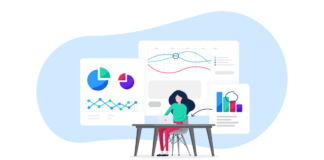If you ever google about technology stack, you will probably find information just about coding languages or platforms they are used to build. However, it goes far beyond.
So, what does a tech stack actually mean? This article will clearly define terms and help you make a decision by highlighting a list of the top software development technologies in 2022.
First of all, the term ”technology stack” touches on programming languages, frameworks, a database, front-end/back-end tools, apps connected via APIs, and software development kits that comply with the final product. It is the base for your future product development.
Importantly, there is no better or worse than the other. Some solutions are older but more experienced, while others are newer yet equally effective. At https://intellisoft.io/, you can gain more information about any stack of your interest.
The final verdict should be based on the current business needs, resources, and goals of the company.
Here are some excellent starting points for your development process.
LAMP Stack – One of the Oldest Options Used by Facebook, WordPress, and Wikipedia
Purpose: an ideal choice to build applications without dependency on external software or data.
+ Free to use and open-source, has a significant kit of tools and materials.
+ Used for Linux, Apache, MySQL, and PHP. It is supported by a large community of expert engineers.
+ Is flexible and operates well with web pages that are always active and need to be refreshed regularly.
MEAN Stack to Support More Up-to-Date Features
For better support of modern features like cloud hosting, you can choose JavaScript-based MEAN.
Purpose: best used for building dynamic websites and applications by smaller teams or start-up companies.
+ All tools are open-source. The development is supported by a large and active community of expert engineers.
+ Usable on any operating system (does not mandate a specific OS).
+ Real-time updates without losing resources and page layout.
Python-Django Stack as One of the Most Used Back-end Frameworks for Python
Purpose: an open-source framework used to build modern, database-driven, highly performing, and feature-rich websites and apps.
+ Operates a swarm number of app functions out-of-the-box, ready-made options that save time in development.
+ Has сlear interface and a low learning process that speeds up the development cycle.
+ Comes with built-in protection from SQL injections, cross-scripting, request forgery, and other types of security measures.
.NET Stack: Supported by Microsoft
This one consists of a variety of frameworks, platforms, as well as libraries that spread throughout over 13 layers.
Purpose: perfectly meet the requirements and expectations of various enterprises, from startups to large corporations.
+ Uses less coding with OOP (object-oriented programming model).
+ All.Net implementations are regularly updated and are continuously evolving.
+ Has Visual Studio, which makes development much easier.
Ruby on Rails (RoR) Stack That Prevents Developing from Scratch
With Ruby on Rails (RoR) Stack, you may not need to build a solution from scratch to replicate or modify other codes.
Purpose: designed to build lightweight, flexible web software or curate a minimum variable product (MVP) of a web application in a shorter time period.
+ Uses JS, HTML, CSS to create dynamic user interfaces and XML or JSON for data shifting.
+ Reduces development time: presents a comprehensive error report, allowing to construct bug-free programs.
+ Allows each object to achieve its distinct attributes while working collaboratively with third-party apps.
In a Nutshell
Unity makes strength. No matter what you use – LAMP Stack, MEAN Stack, Python-Django Stack, .NET Stack, Ruby on Rails Stack or others – it has to be unique in goal, vision, and team structure. The right choice will function as a tool for getting your business up on its feet.


























